Because dead drops are fun. And because the so-called "authorities" are becoming
more and more nosy.
The size of the microSD card is specified as 15x11x1 mm. That is fairly small.
A variant of Spy Bolt
, with internal cavity large enough to fit it in,
was decided to be built.
A check of engineering tables revealed the necessary data. M12 thread
was chosen for the plug; its outside diameter is 12mm. The hole drilled for the thread is
specified to be 10.2mm. As we do not need to carry large forces in the thread, a lower depth
was used and a 11mm hole, large enough diameter to fit the card, was chosen.
From the thread diameter of the plug the necessary size of the bolt was determined to be M16. Fairly massive but still not excessive.
The bolt is a form factor not easy to explain when transported in a luggage, where it sticks out due to its unusuality. In a tool/parts box it will be less conspicuous, and it will be even less easy to spot when mounted in place in e.g. a metal gate, house girder, or a vehicle chassis, especially when the plug is covered with paint.
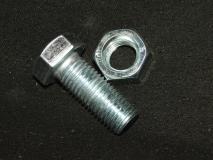 M16 bolt in virgin state, nut |
The bolt was chucked in the lathe and a small hole was drilled to its end. (It was a little off-center but not catastrophically.) The bolt was then moved to the drill press. A longer, deeper hole with 5mm diameter was drilled along the bolt axis, using the small hole as guidance.
A 10mm hole was then drilled around the 5mm hole, using copious amount of cooling emulsion. A 11mm hole followed through the 10mm hole, finalizing its size and depth.
A three-piece set of M12 taps was used for cutting the thread.
The first bit was not employed, as the 11mm hole was too large for the precutting thread;
the work started with the second bit and was finished with the third one. The thread cutting was
easy and the resulting thread, while fairly shallow (as expected), was sufficient for the purpose.
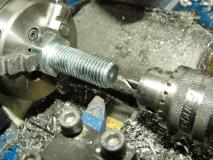 Predrilling the coaxial hole | 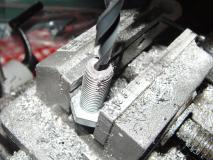 Drilling the 11mm hole | 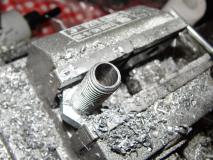 Coaxial hole drilled | 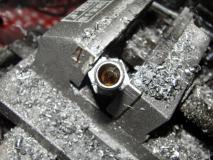 Coaxial hole drilled |
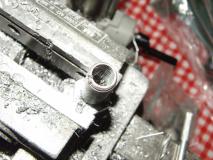 M12 thread being cut | 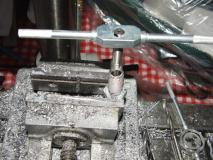 M12 thread being cut |
To plug the hole a stub of M12-threaded rod was needed. A few millimeters of the end of a M12 bolt were cut. The cut side was faced on a lathe and chamfered to 45-degree edge.
However, it turned out that the bolt end, which was supposed to look more natural than a well-faced surface, does not look natural at all. Its appearance was too unusual. Another approach was therefore tried.
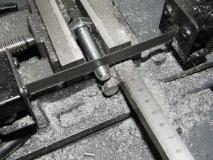 Cutting the plug | 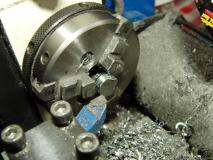 Facing the plug | 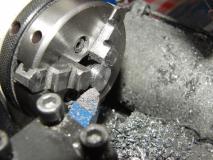 Facing the plug | 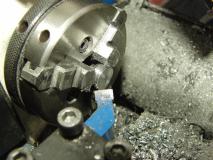 Chamfering the plug |
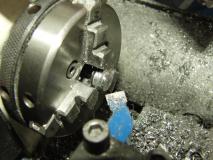 Machined plug v1 | 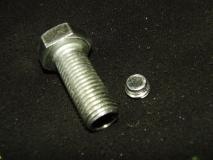 Bolt with plug v1 | 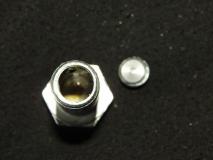 Bolt with plug v1 | 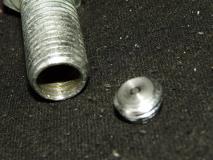 Bolt with plug v1 |
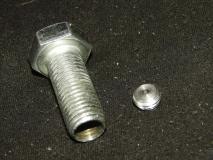 Bolt with plug v1 | 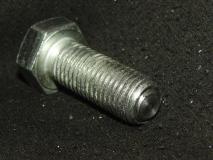 Bolt with plug v1 |
A further piece was cut from the M12 bolt and both its ends were faced. The outer end was left without further treatment of the edge, the inner end was machined to 45-degree angle for easier mating with the bolt.
A coaxial hole was drilled into the inner end of the plug for better user awareness of which end is which. The hole can also be used for attaching holders for various pieces of whatevers. As the pre-drilling step was skipped, the drill bit slid a little and the hole was made off-center. It does not matter in this application except aesthetically.
It turned out that the new version of the plug is fairly superior in appearance to the v1.
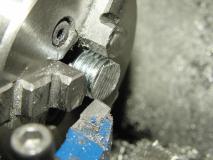 Facing plug v2 | 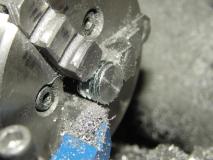 Facing plug v2 | 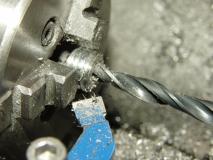 Drilling hole in plug | 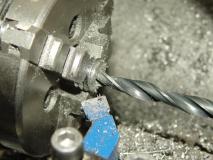 Drilling hole in plug |
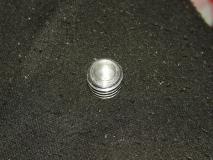 Finished plug | 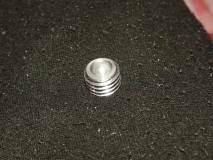 Finished plug | 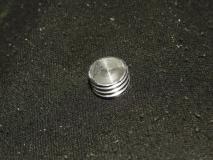 Finished plug |
A test shown that the microSD card just barely does not fit the cavity. It was decided against filing down the half-millimeter off the card. A pair of opposite grooves, about half-millimeter deep each, was milled into the cavity.
The cavity was then cleaned from remaining swarf and oil using some water, soap, vigorous shaking, and Q-tips.
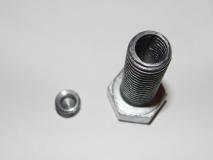 Groove for the card | 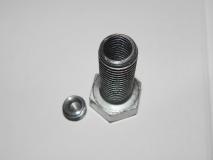 Groove for the card |
The resulting bolt can fit a microSD card comfortably. Its removal is sometimes a little tricky, but a pair of tweezers or careful shaking does the job easily.
The hole is weakening the bolt's structural strength significantly. Careful consideration of its use can however compensate for this factor and allow its use in real application, especially when sufficient redundancy is provided by other, non-hollowed-out bolts.
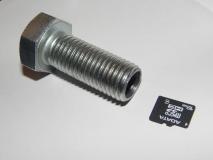 Bolt and microSD card | 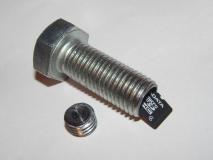 Bolt and microSD card | 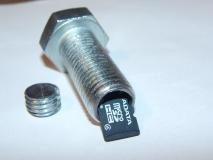 Bolt and microSD card | 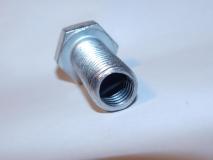 Bolt and microSD card |
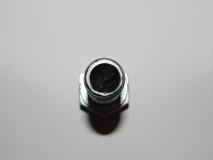 Bolt and microSD card | 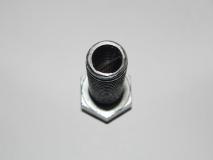 Bolt and microSD card |
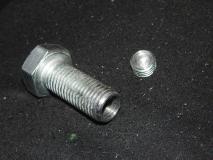 Bolt and plug | 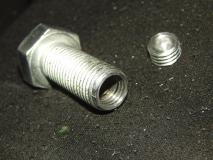 Bolt and plug | 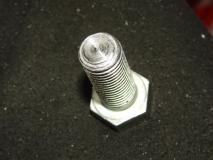 Bolt and plug | 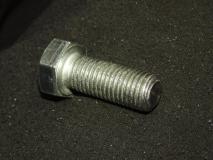 Bolt and plug |
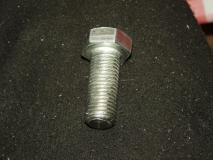 Bolt and plug | 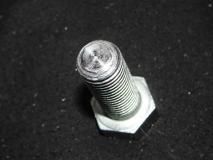 Bolt and plug |
Coaxially drilled bolts have a number of other uses. A few of them are: